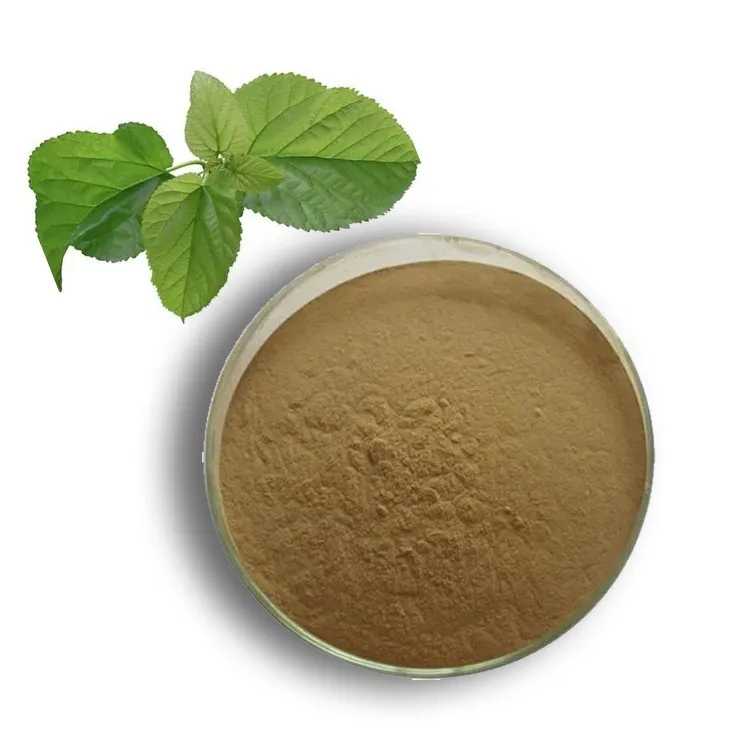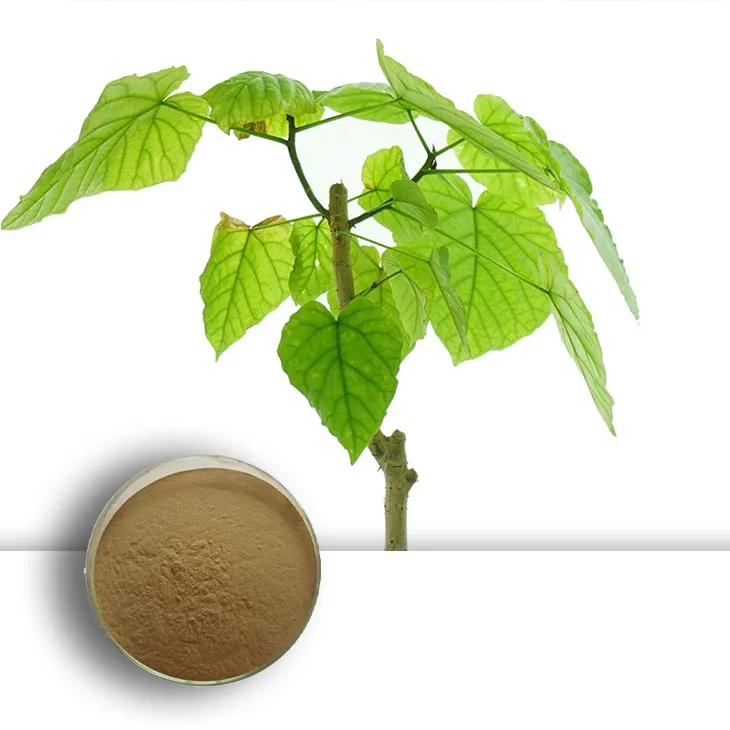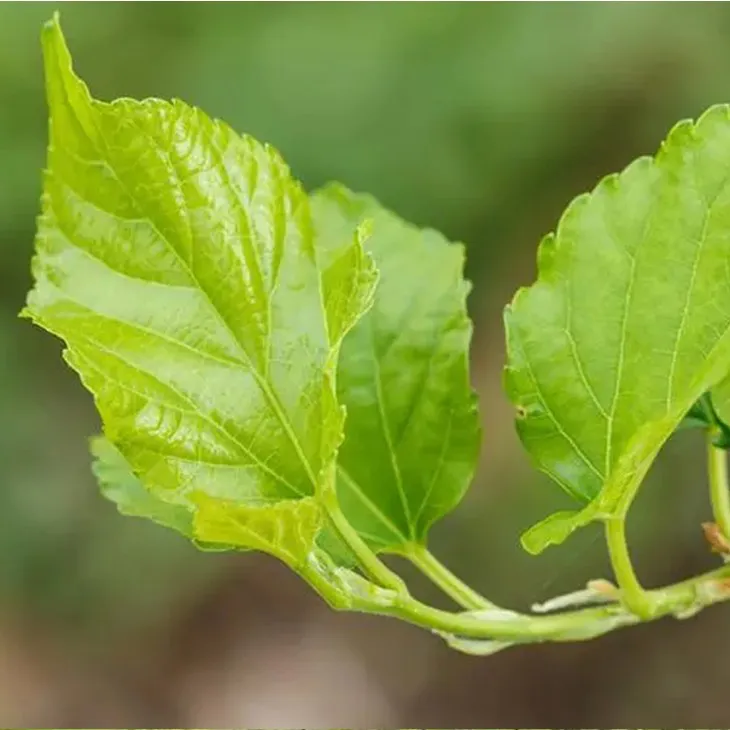- 0086-571-85302990
- sales@greenskybio.com
The process of extracting mulberry leaf alkaloids from mulberry leaf extracts.
2024-11-28

1. Introduction
Mulberry leaves have been recognized for their various beneficial properties for a long time. One of the important components in mulberry leaves is alkaloids. Mulberry leaf alkaloids have shown potential in many fields such as medicine, food, and cosmetics. Extracting these alkaloids from Mulberry leaf Extracts is a crucial process that requires a comprehensive understanding of the chemical composition of the extract and the optimization of extraction methods.

2. Chemical Composition of Mulberry leaf Extract Related to Alkaloid Extraction
2.1. Alkaloids in Mulberry Leaves
Mulberry leaf alkaloids mainly include 1 - deoxynojirimycin (DNJ), fagomine, and other related compounds. DNJ is one of the most studied alkaloids in mulberry leaves. It has the function of inhibiting α - glucosidase, which is beneficial for blood - glucose control. Fagomine also shows certain biological activities. These alkaloids are usually present in the form of glycosides or free bases in Mulberry leaf Extracts.
2.2. Other Components
In addition to alkaloids, mulberry leaf extracts also contain a large amount of flavonoids, polysaccharides, and phenolic compounds. Flavonoids, such as rutin and Quercetin, have antioxidant and anti - inflammatory properties. Polysaccharides can play a role in immunomodulation. Phenolic compounds also contribute to the overall antioxidant capacity of the extract. These components may interact with alkaloids during the extraction process, either facilitating or interfering with the extraction of alkaloids.

3. Traditional Extraction Methods
3.1. Solvent Extraction
Solvent extraction is one of the most commonly used methods for extracting mulberry leaf alkaloids. Organic solvents such as ethanol, methanol, and chloroform are often used.
- Firstly, the dried mulberry leaves are ground into a fine powder. This increases the surface area of the leaves, making it easier for the solvent to access the alkaloids inside.
- Then, the powder is soaked in the selected solvent at a certain ratio. For example, a common ratio could be 1:10 (mulberry leaf powder: solvent). The mixture is usually stirred continuously for a period of time, which can range from several hours to a few days. This helps in the dissolution of alkaloids into the solvent.
- After that, the mixture is filtered to separate the solid residue from the solvent containing the alkaloids. Filtration can be carried out using filter paper or a Buchner funnel in a laboratory setting.
- Finally, the solvent is evaporated under reduced pressure or at a low temperature to obtain the alkaloid - rich extract. However, this method has some drawbacks. For example, it may also extract other non - alkaloid components, reducing the purity of the alkaloid extract.
3.2. Acid - Base Extraction
Acid - base extraction is based on the different solubility of alkaloids in acidic and basic environments.
- Initially, the mulberry leaf extract is acidified with an appropriate acid, such as hydrochloric acid. This converts the alkaloids into their salt forms, which are more soluble in water.
- Then, the acidic solution is extracted with an organic solvent to remove impurities.
- Next, the aqueous layer is basified with a base like sodium hydroxide. This causes the alkaloids to be converted back to their free - base forms, which can be extracted into an organic solvent again.
- Finally, the organic solvent is evaporated to obtain the alkaloids. However, this method requires careful control of pH values, and improper operation may lead to the degradation of alkaloids.

4. Modern and Advanced Extraction Technologies
4.1. Supercritical Fluid Extraction (SFE)
Supercritical fluid extraction has emerged as an advanced extraction technique. Supercritical carbon dioxide (CO₂) is often used as the extraction medium.
- The advantages of SFE are numerous. Supercritical CO₂ has a low critical temperature (31.1°C) and pressure (7.38 MPa), which is suitable for extracting heat - sensitive alkaloids.
- It has a high diffusivity and low viscosity, enabling it to penetrate the sample matrix quickly and efficiently.
- Moreover, the selectivity of SFE can be adjusted by changing the pressure, temperature, and addition of modifiers. For example, adding a small amount of ethanol as a modifier can improve the solubility of alkaloids in supercritical CO₂.
- However, the equipment for SFE is relatively expensive, which limits its widespread application at present.
4.2. Microwave - Assisted Extraction (MAE)
Microwave - assisted extraction utilizes microwave energy to accelerate the extraction process.
- Microwaves can directly heat the solvent and the sample, increasing the molecular movement and mass transfer rate. This results in a shorter extraction time compared to traditional methods.
- It also has the potential to improve the extraction yield and selectivity. For example, by adjusting the microwave power and extraction time, different alkaloids can be selectively extracted.
- However, improper microwave power may cause local overheating, which may lead to the degradation of alkaloids.
4.3. Ultrasonic - Assisted Extraction (UAE)
Ultrasonic - assisted extraction is another modern extraction method.
- Ultrasonic waves generate cavitation bubbles in the solvent. When these bubbles collapse, they produce intense shock waves and micro - jets, which can disrupt the cell walls of mulberry leaves and enhance the release of alkaloids.
- UAE can significantly reduce the extraction time and solvent consumption. It is also a relatively simple and cost - effective method.
- However, like other methods, it needs to be optimized to ensure the highest extraction efficiency and the best quality of the alkaloid extract.
5. Optimization of the Extraction Process
5.1. Selection of Optimal Solvent
The choice of solvent is crucial for the extraction of mulberry leaf alkaloids.
- Different solvents have different solubility for alkaloids. Ethanol is a popular solvent due to its relatively good solubility for alkaloids, low toxicity, and ease of handling. However, in some cases, a mixture of solvents may be more effective. For example, a mixture of ethanol and water in a certain ratio can improve the extraction efficiency.
- The polarity of the solvent also plays an important role. Alkaloids with different structures may have different polarities, and choosing a solvent with appropriate polarity can enhance the selectivity of extraction.
5.2. Optimization of Extraction Parameters
- Temperature: For traditional solvent extraction methods, the extraction temperature can affect the solubility of alkaloids. Generally, a higher temperature can increase the solubility, but it may also cause the degradation of alkaloids. For modern extraction methods such as SFE, temperature is also a key parameter that affects the density and solubility of supercritical fluids.
- Time: The extraction time needs to be optimized. A too - short extraction time may result in incomplete extraction of alkaloids, while a too - long time may not only waste time and resources but also increase the extraction of impurities.
- Solid - to - liquid ratio: This ratio determines the amount of solvent used relative to the amount of mulberry leaf powder. An appropriate ratio can ensure efficient extraction while reducing solvent consumption.
5.3. Pretreatment of Mulberry Leaves
- Drying is an important pretreatment step. Different drying methods such as air drying, oven drying, and freeze - drying can affect the quality and chemical composition of mulberry leaves. Freeze - drying can better preserve the active components in mulberry leaves, but it is more expensive.
- Grinding the dried mulberry leaves to an appropriate particle size is also necessary. A finer particle size can increase the surface area, but if it is too fine, it may cause problems such as clogging during the extraction process.
6. Purification of Mulberry Leaf Alkaloids
After extraction, the obtained alkaloid extract usually contains impurities. Purification is essential to increase the purity of the alkaloids.
- Column chromatography is a commonly used method for purifying mulberry leaf alkaloids. Different stationary phases and mobile phases can be selected according to the properties of alkaloids. For example, silica gel columns can be used, and the mobile phase can be a mixture of solvents with different polarities.
- Recrystallization is another method. By dissolving the alkaloid extract in a suitable solvent and then slowly cooling or evaporating the solvent, pure alkaloid crystals can be obtained. However, this method requires careful selection of solvents and precise control of crystallization conditions.
7. Conclusion
The extraction of mulberry leaf alkaloids from mulberry leaf extracts is a complex but important process. Understanding the chemical composition of the extract, choosing appropriate extraction methods, optimizing extraction parameters, and purifying the obtained alkaloids are all crucial steps. With the development of modern extraction technologies, it is possible to obtain high - yield and high - purity mulberry leaf alkaloids more efficiently. These alkaloids have great potential for further development and application in various fields, which will bring more benefits to human health and related industries.
FAQ:
What are the main alkaloids present in mulberry leaf extracts?
There are several main alkaloids in mulberry leaf extracts, such as 1 - deoxynojirimycin (DNJ). These alkaloids have various biological activities and potential health benefits.
What factors can affect the extraction of mulberry leaf alkaloids?
Several factors can influence the extraction. The type of solvent used is crucial, as different solvents have different solubility for alkaloids. Temperature also plays a role, as higher temperatures may increase the solubility but could also potentially degrade some of the alkaloids. The extraction time and the particle size of the mulberry leaf powder can also impact the extraction efficiency.
How can the purity of mulberry leaf alkaloids be improved during extraction?
To improve the purity, multiple purification steps can be employed. For example, after the initial extraction, techniques like chromatography can be used. This can separate the alkaloids from other components in the extract. Another approach is to optimize the extraction conditions to minimize the extraction of unwanted substances along with the alkaloids.
What are the potential applications of mulberry leaf alkaloids?
Mulberry leaf alkaloids have potential applications in the pharmaceutical and nutraceutical fields. They may have hypoglycemic effects, which could be useful in the treatment or prevention of diabetes. Additionally, they may also have antioxidant and anti - inflammatory properties, making them potentially beneficial for overall health and in the development of related health products.
How is the yield of mulberry leaf alkaloids calculated?
The yield of mulberry leaf alkaloids can be calculated by dividing the amount of alkaloids obtained after extraction by the amount of alkaloids present in the original mulberry leaf material (theoretically), and then multiplying by 100% to get a percentage value. This calculation helps in evaluating the efficiency of the extraction process.
Related literature
- Alkaloid Extraction from Mulberry Leaves: A Review of Methods and Applications"
- "Optimizing the Extraction of Mulberry Leaf Alkaloids for Therapeutic Use"
- "The Chemical Composition and Alkaloid Extraction of Mulberry Leaf Extracts"
- ▶ Hesperidin
- ▶ citrus bioflavonoids
- ▶ plant extract
- ▶ lycopene
- ▶ Diosmin
- ▶ Grape seed extract
- ▶ Sea buckthorn Juice Powder
- ▶ Beetroot powder
- ▶ Hops Extract
- ▶ Artichoke Extract
- ▶ Reishi mushroom extract
- ▶ Astaxanthin
- ▶ Green Tea Extract
- ▶ Curcumin Extract
- ▶ Horse Chestnut Extract
- ▶ Other Problems
- ▶ Boswellia Serrata Extract
- ▶ Resveratrol Extract
- ▶ Marigold Extract
- ▶ Grape Leaf Extract
- ▶ blog3
- ▶ blog4
- ▶ blog5
-
The best lemon juice powder in nature.
2024-11-28
-
Organic Vitamin K2 Powder Suppliers
2024-11-28
-
Bulk purchase of L - tyrosine.
2024-11-28
-
Vitamin K2 Manufacturers
2024-11-28
-
100% Pure Natural Rutin.
2024-11-28
-
Chinese Citrus Bioflavonoid Suppliers.
2024-11-28
-
Bilberry Extract
2024-11-28
-
Red Wine Extract
2024-11-28
-
Ivy Extract
2024-11-28
-
Licorice Root Extract Powder
2024-11-28
-
Motherwort Extract
2024-11-28
-
Maca Extract
2024-11-28
-
Sea buckthorn Juice Powder
2024-11-28
-
Pueraria Lobata Extract
2024-11-28
-
Bamboo Leaf extract
2024-11-28
-
Curcumin Extract
2024-11-28





















